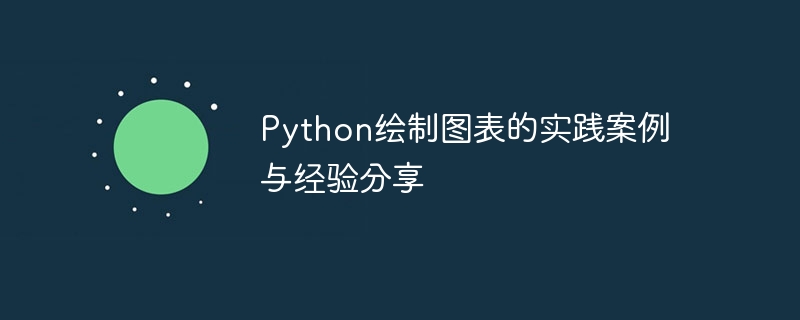

Practical cases and experience sharing of Python charting
Introduction:
With the widespread application of data analysis and visualization in various fields, Python as A powerful data processing and visualization tool that is receiving increasing attention and use. This article will share some practical cases and experiences in Python chart drawing, and help readers better master Python drawing skills and methods through specific code examples.
1. Draw a line chart
A line chart is a common chart type that displays data changes over time. Using the Matplotlib library in Python, you can easily and quickly draw line charts with various styles. The following is a simple sample code for drawing a line chart:
import matplotlib.pyplot as plt
# 数据
x = [1, 2, 3, 4, 5]
y = [10, 13, 15, 18, 20]
# 绘制折线图
plt.plot(x, y, 'b-', label='line')
# 设置标题和坐标轴标签
plt.title('Line Chart')
plt.xlabel('X axis')
plt.ylabel('Y axis')
# 显示图例
plt.legend()
# 显示图表
plt.show()2. Drawing a bar chart
Histogram is suitable for comparing numerical values between different categories or groups. In Python, a bar chart can be easily drawn using the bar function of the Matplotlib library. The following is a simple sample code for drawing a histogram:
import matplotlib.pyplot as plt
# 数据
x = [1, 2, 3, 4, 5]
y = [10, 13, 15, 18, 20]
# 绘制柱状图
plt.bar(x, y)
# 设置标题和坐标轴标签
plt.title('Bar Chart')
plt.xlabel('X axis')
plt.ylabel('Y axis')
# 显示图表
plt.show()3. Drawing a scatter plot
A scatter plot is used to show the relationship between two variables and is suitable for observing data. Distribution and trends. The Matplotlib library in Python provides the scatter function for drawing scatter plots. The following is a simple sample code for drawing a scatter chart:
import matplotlib.pyplot as plt
# 数据
x = [1, 2, 3, 4, 5]
y = [10, 13, 15, 18, 20]
# 绘制散点图
plt.scatter(x, y)
# 设置标题和坐标轴标签
plt.title('Scatter Plot')
plt.xlabel('X axis')
plt.ylabel('Y axis')
# 显示图表
plt.show()4. Drawing a pie chart
A pie chart is a type of chart used to display the proportions of different categories. Using the pie function of the Matplotlib library in Python can easily draw pie charts. The following is a simple sample code for drawing a pie chart:
import matplotlib.pyplot as plt
# 数据
labels = ['A', 'B', 'C', 'D', 'E']
sizes = [15, 30, 20, 10, 25]
# 绘制饼图
plt.pie(sizes, labels=labels, autopct='%1.1f%%')
# 设置标题
plt.title('Pie Chart')
# 显示图表
plt.show()Summary:
This article introduces some common practice cases and experience sharing for drawing charts in Python, and helps readers through specific code examples Better understand and master the techniques and methods of drawing various charts. Of course, the above examples are just the tip of the iceberg, and Python has many other powerful libraries and functions that can be used for data visualization. I hope readers can further improve their data analysis and visualization capabilities through the sharing of this article.
The above is the detailed content of Practical cases and experience sharing of Python chart drawing. For more information, please follow other related articles on the PHP Chinese website!